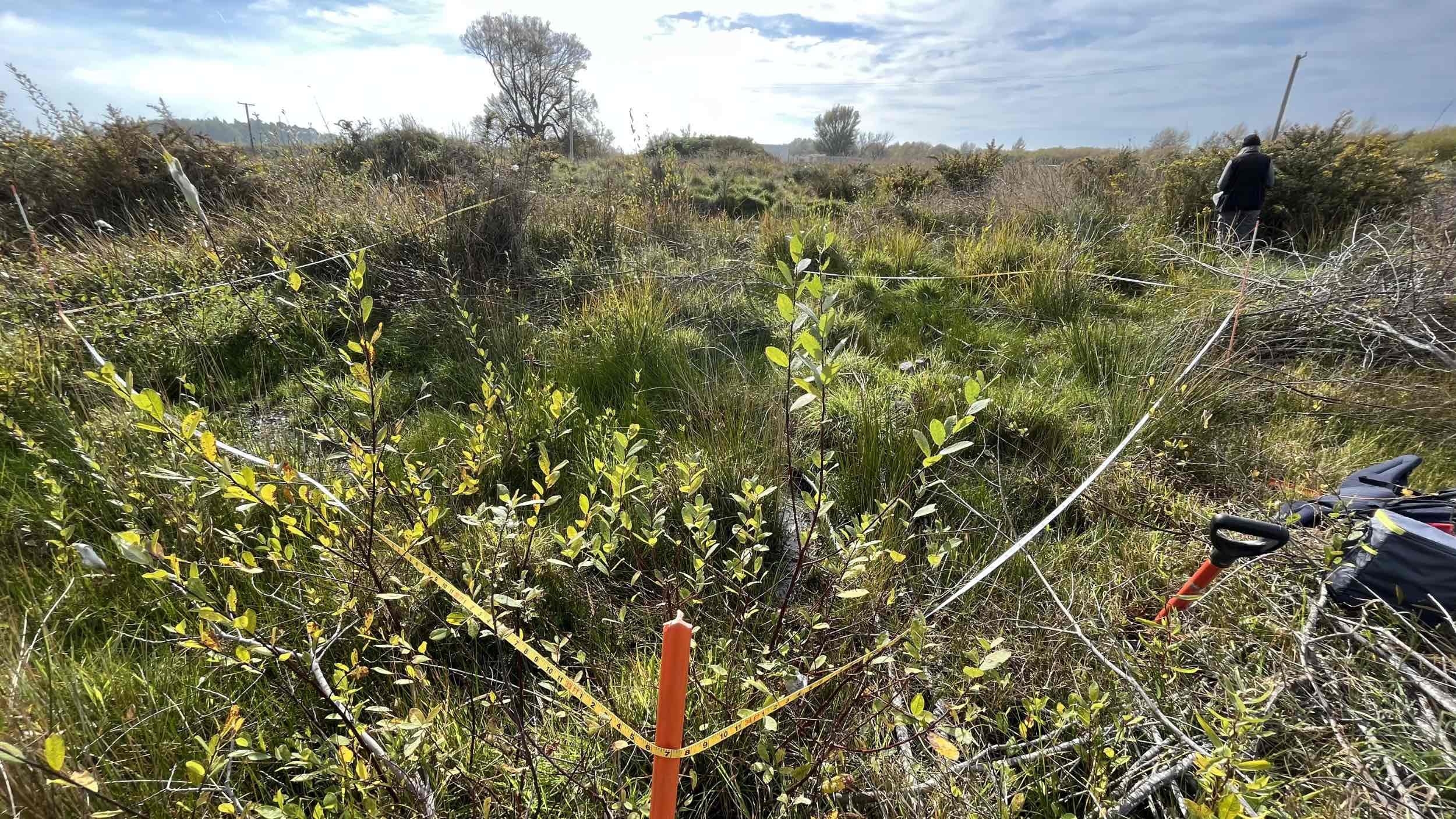
Vegetation Composition - as per Atkinson
Recently Urbeco set up several wetland plots for Environment Canterbury. As well as detailed species lists and estimates of cover, the vegetation ‘composition’ of each plot was recorded.
Vegetation composition was described using a method devised by Dr Ian Atkinson in 1985. This method is used extensively in New Zealand, and for all kinds of vegetation - not just wetlands. It manages to convey a useful amount of information in a concise way, by listing a few of the most common species as well as providing an indication of the physical structure of the vegetation.
There are some variations, for certain situations, but the simplest scenario is:
1. Any species covering more than 20% is listed. Where no species covers 20%, then several of the most common species are listed. At the discretion of the mapper, additional species may also be cited.
2. The formatting of the species name(s) indicates the percentage cover range for that species:
3. The structure of the vegetation (whether the canopy has any layer(s) below it) is indicated by the characters between species:
4. An asterisk indicates the species is not native to New Zealand
In his paper Dr Atkinson recommends the use of common names (being shorter), but for the avoidance of any possible confusion I have used scientific names. You can see his original paper here.
Examples of Vegetation Composition descriptions
Below are several examples from the recent wetland monitoring plots:
Here the tallest layer was Salix cinerea (grey willow). Since it was the only species in that layer it is listed even though it was less than 20% cover. Since it was only 12% cover it is shown in rounded brackets to indicate it is in the 10-19% cover range.
The next layer down is indicated by the forward slash. This was 60% cover of Juncus articulatus, so it is underlined, to indicate the 50-100% cover class.
The next most common species was Eleocharis acuta, but it was only around 10% cover so it was not listed. 18 species were found at this site altogether.
Here there was 20% cover of grey willow, which was taller than the 30% cover of Eleocharis acuta.
Both of these are in the 20-49% range, so they don’t have any extra formatting.
The next most common species were two grasses, but they didn’t exceed the 20% level. 11 species were seen at this site.
The top layer here was mainly grey willow, with 75% cover.
Below this was an extensive layer of 90% Blechnum novae-zelandiae ferns.
Both of the species were in the 50-100% cover range and so they are both underlined.
The percent cover is assessed as a ‘birds eye view’ for each species, so if there are multiple layers the sum of the covers will typically exceed 100%.




